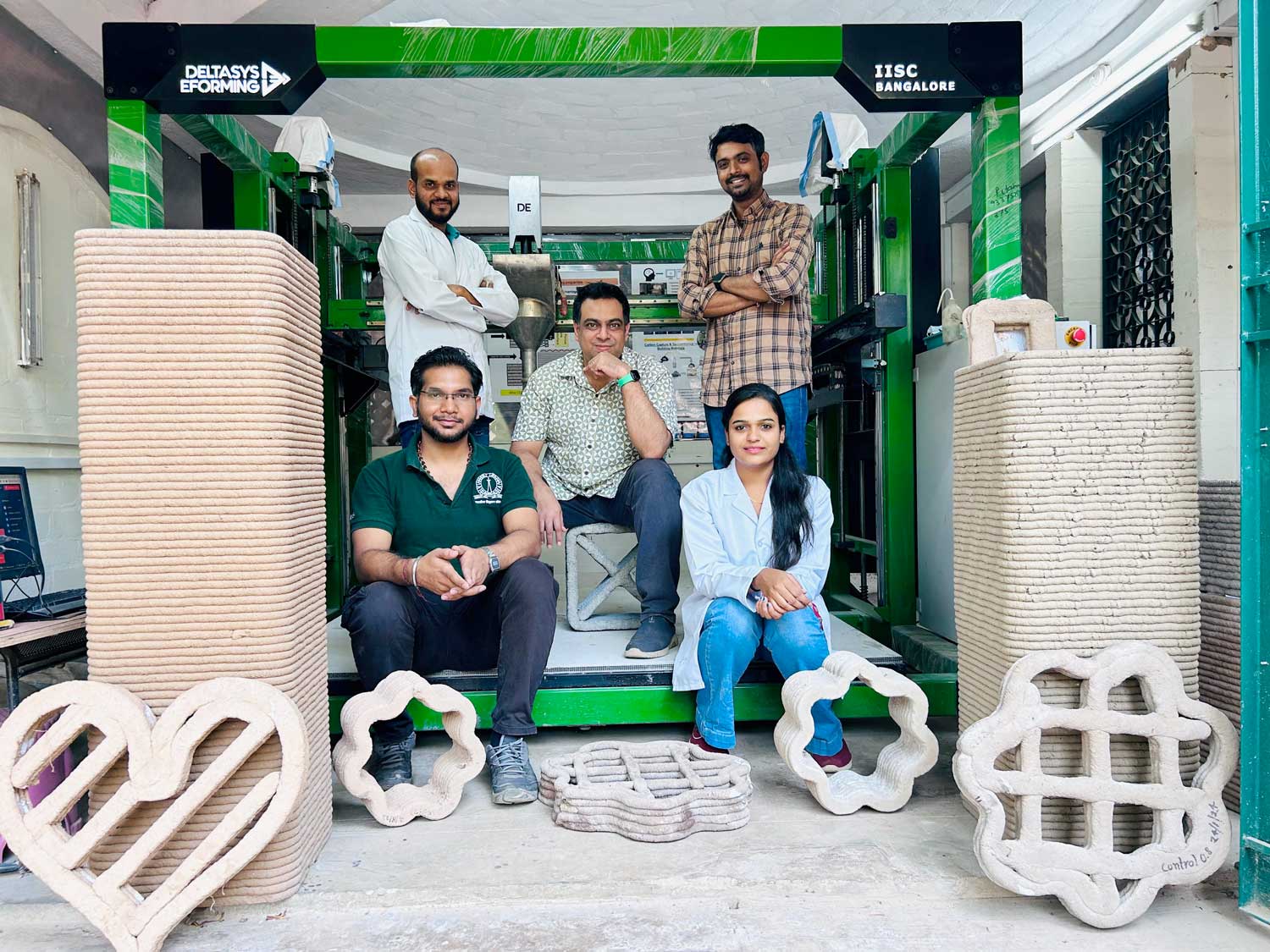In the midst of rising CO2 emissions and dwindling sand resources, the construction industry worldwide is facing major challenges. Researchers at the Indian Institute of Science are developing innovative solutions by incorporating CO2 from industrial waste gases into construction materials. These approaches include the use of construction waste and excavated soil as a substitute for natural sand and the development of 3D printable materials.
Souradeep Gupta, Assistant Professor at CST, in whose lab these studies are being conducted, explains: “CO2 utilisation and sequestration can be a scalable and feasible technology for manufacturing low-carbon prefabricated building products, while being aligned with the nation’s decarbonisation targets.”
His team found that replacing natural sand with CO2-treated construction waste in mortar can increase its compressive strength by 20-22% when the mortar cures in a CO2-rich environment.
Further research has shown that injecting CO2 gas into clayey soil improves stabilization by cement and lime, increasing the engineering performance of the material. One study found that sequestering CO2 in soil materials used to replace up to 50% of the fine aggregates in mortar increased the early strength of the materials by around 30%.
“When you sequester carbon dioxide in cement-soil materials, tiny crystals of calcium carbonates are formed, which reduce the fraction of medium capillary pores, densify the interfacial zones and thus improve the compressive strength,” explains Ashutosh Dwivedi, first author and PhD student at CST.
The team also developed 3D printable materials from excavated soil, stabilized with binders such as Portland cement, blast furnace slag and fly ash. These materials could reduce the need for cement and natural sand in mortar by up to 50%. In the future, the team plans to study the effect of industrial fumes on the micro- and macroscopic properties of these materials to understand their potential for CO2 absorption and technical properties.
Discussions with major construction companies are considering the application of these findings in production facilities. Gupta is also part of a national committee currently working on revising the standards for natural and recycled aggregates in cement-based building materials.
“The climate change impacts of construction materials, exacerbated by increasing CO2 emissions and sand scarcity, are increasing every year,” he says. “Finding alternatives to natural sand is the need of the hour.”
Given the increasing climatic impact of building materials and the urgency to find alternatives to natural sand, this research underlines the need for innovative solutions in the construction industry.
Subscribe to our Newsletter
3DPresso is a weekly newsletter that links to the most exciting global stories from the 3D printing and additive manufacturing industry.






















